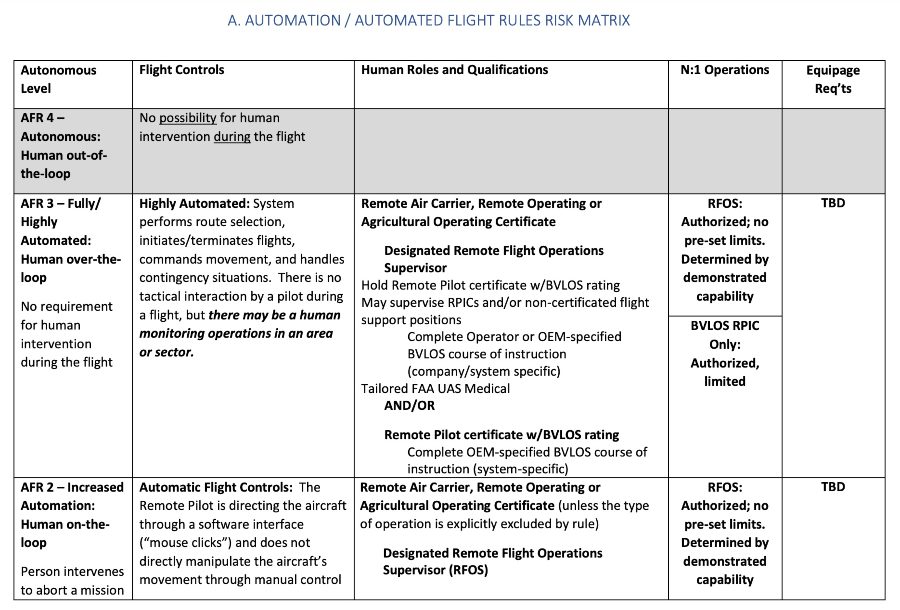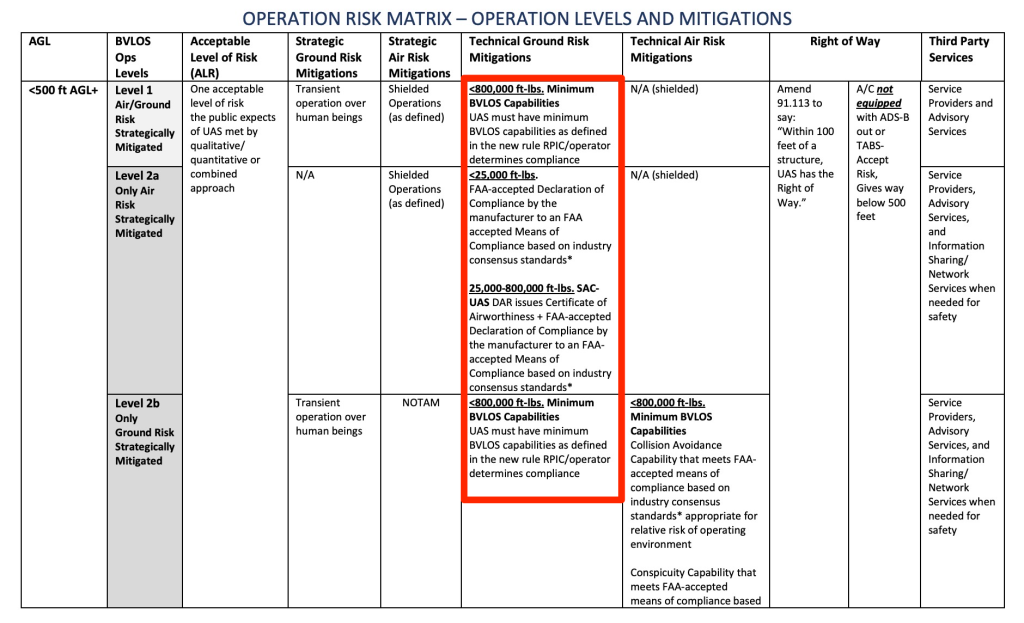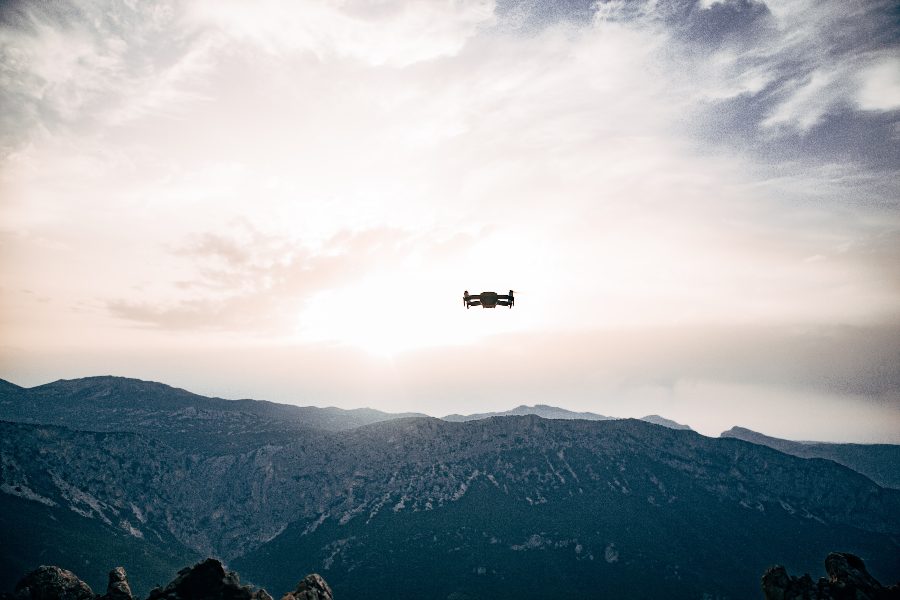BVLOS Takes a Big Step Forward—FAA Releases Recommendations for New BVLOS Rules
BY Zacc Dukowitz
16 March 2022The FAA recently shared its recommendations for rulemaking on flying beyond visual line of sight (BVLOS).
The recommendations were created by the FAA’s Advisory Rulemaking Committee (ARC) and are presented in a 381 page report that lays out specific guidelines for rules that could help BVLOS drone operations could become normalized in the U.S.
Some of the recommendations include developing a new operator qualification for drone pilots that would make them “BVLOS rated,” establishing rules to certify specific drone models for BVLOS operations, and the establishment of an Acceptable Level of Risk (ALR) for BVLOS that will give drone pilots flexibility in how they ensure compliance with new regulations.
The release of these recommendations is a big step toward making BVLOS a regular option for drone pilots with the use, which could have a big impact in how drones are used across almost all commercial applications.
You can peruse the full report here, or keep reading for a summary of the report’s key recommendations.
Key Recommendations from the ARC’s Report
Here are the four main recommendations included in the ARC’s recommendations for creating rules around BVLOS drone operations.
1. Establish Acceptable Levels of Risk for BVLOS Operations
The ARC recommends that the FAA use a risk matrix to establish different levels of risk and the steps pilots can take to mitigate them. This approach gives the FAA the ability to establish consistent regulations and gives pilots a degree of flexibility with how they achieve compliance.
. . . the ARC recommends that the FAA set an acceptable level of risk (ALR) for UAS that is consistent across all types of operations being performed . . . this approach will allow the FAA to adopt a common and consistent set of regulations and guidance, giving operators the flexibility to meet the ALR through qualitative or quantitative methods, or a hybrid approach.
Here’s a section of the risk matrix included in the report:

Want the details? This recommendation begins on page 22 of the report.
2. Establish Clear Levels of Autonomy and Associated Human Responsibilities
The ARC recommends establishing four distinct levels of autonomy, each of which will have distinct requirements for human intervention (i.e., for a drone pilot’s involvement in the operations).
. . . the ARC recommends a series of modifications to the right of way rules in Low Altitude Shielded Areas (within 100’ of a structure or critical infrastructure as defined in 42 U.S.C. § 5195c) 2 and in Low Altitude Non-Shielded Areas (below 400’) to accommodate UA operations. Specifically, the ARC recommends several amendments to 91.113 to allow automatic means for see-and-avoid responsibility . . .
Here’s a section of the proposed levels of autonomy included in the report:

Want the details? This recommendation begins on page 43 of the report.
3. Special Licensing for BVLOS Operations
The ARC recommends establishing a new, distinct license for remote operations that would be required for pilots to fly BVLOS. This licensing would be required both for individuals and for organizations, in the form of Remote Operating certificates and Remote Air Carrier certificates.
In addition to passing the Part 107 knowledge test, pilots would have to pass a new BVLOS knowledge test to obtain a Remote Operating certificate for BVLOS operations. Unlike the Part 107 test, the BVLOS test will include an additional practical training and qualification requirement (qualifications would be tied to specific drone models, use cases, and operations).
. . . the ARC recommends an approach to operator qualification that would extend Part 107 . . . [and create] a new Remote Pilot certificate rating to cover BVLOS operations beyond the scope of the extended Part 107 rating.
Here’s a section of the proposal for creating a BVLOS rating for Remote Pilot Certificate included in the report:

Want the details? This recommendation begins on page 115 of the report.
4. Create a Certification Pathway for Drones to Be Certified for BVLOS Operations
The ARC recommends creating a BVLOS Rule that would include a process for specific drone models to be certified for BVLOS flight.
The FAA has already begun to lay the groundwork for establishing processes to recognize different drones for different types of operations. In early 2020, it published airworthiness criteria for certifying 10 different drones as special aircraft, creating a path for establishing type certifications for drones in the U.S.
. . . the ARC recommends that the FAA establish a new BVLOS Rule which includes a process for qualification of UA and UAS, applicable to aircraft up to 800,000 ft-lb of kinetic energy (in accordance with the Operation Risk Matrix).
Here’s a section of the report that highlights the certification requirements for different drone sizes involved in BVLOS operations (from the risk matrix included in the first recommendation above):

Want the details? These requirements appear in the risk matrix that appears on page 22 of the report.
The FAA’s Focus on BVLOS
It’s no exaggeration to say that BVLOS is the primary focus of most FAA drone testing these days.
The FAA’s BEYOND program—a continuation of the UAS IPP program, which was created to test various types of drone operations prohibited by the Part 107 rules—is so clearly focused on BVLOS that beyond is its entire name.

Here are the primary goals of the BEYOND program:*
- Beyond Visual Line of Sight (BVLOS) operations that are repeatable, scalable and economically viable with specific emphasis on infrastructure inspection, public operations and small package delivery.
- Leveraging industry operations to better analyze and quantify the societal and economic benefits of UAS operations.
- Focusing on community engagement efforts to collect, analyze and address community concerns.
*Taken from the FAA’s website.
Why all the focus on BVLOS?
Because enabling BVLOS operations has to help commercial drone operations grow rapidly, both by widely expanding existing use cases and by opening up brand new ones. And this growth could lead not only to more drone usage, but to more drone jobs in general.
Drone delivery, inspections of critical infrastructure, agriculture, forestry, security monitoring, public safety, and several other common commercial drone operations would all be impacted positively if pilots could fly BVLOS by following a list of rules, instead of having to obtain special permission for each individual flight.
BVLOS also dovetails with the growth of autonomy and the ability to operate drones from remote locations. If pilots can fly without being physically present—that is, without having to keep the drone in their line of sight—then they’ll be able to fully leverage these new technologies by flying from remote locations, or even by flying without a pilot directly involved at all.




